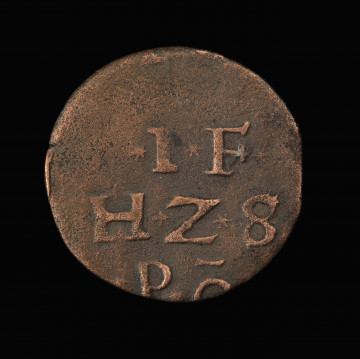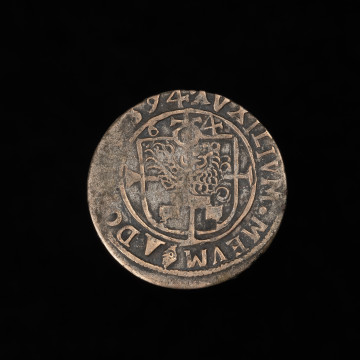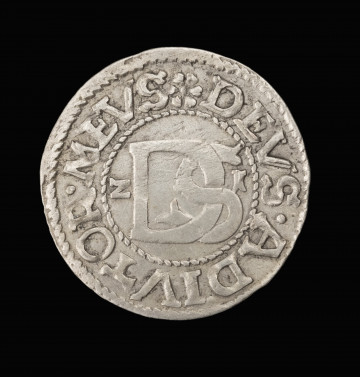
Sherf
1591
National Museum in Szczecin
Part of the collection: Pomeranian coins
Wittens had come to dominate the monetary circulation of the Baltic zone in the 2nd half of the 14th century. The main Pomeranian cities, following the example of Lübeck and Hamburg, entered into agreements and began to produce these denominations, which were the equivalent of 4 deniers, under a single minting system. The stamps were also standardised, with a cross combined with the city symbol on the obverse and the national mark on the reverse. Thereafter, the dukes proceeded with production. The coins initially contained around 1 g of high-purity 930/1000 silver, but gradually lost their quality. At the dawn of the 15th century, the weight of Pomeranian wittens ranged from 0.7-0.9 g and corresponded to the value of 3 deniers. Wittens were an important part of the new monetary system introduced by Bogislaw X of Pomerania (1454-1523). From 1489 they were minted intermittently at three mints: Gartz on the Oder, Szczecin and Dąbie, while from 1499 onwards they were only minted in Szczecin. They feature iconographic elements such as the symbol of the ruler - the initial of Bogislaw X of Pomerania, i.e. the Gothic letter B - and the coat of arms of the whole United Duchy of Pomerania - the griffin. Wittens were also part of circulation in the Baltic Sea basin and are still often documented in hoards and archaeological sites. The most vivid example testifying to the circulation of these coins is the 15th-century hoard discovered in 1999 at a castle grounds in Szczecin, presented in the catalogue "Szczeciński skarb z Podzamcza." Genowefa Horoszko
Author / creator
Object type
witten (coin)
Technique
coining
Material
silver
Origin / acquisition method
acquisition
Creation time / dating
Creation / finding place
Owner
Muzeum Narodowe w Szczecinie
Identification number
Location / status

1591
National Museum in Szczecin

1594
National Museum in Szczecin

1621
National Museum in Szczecin
DISCOVER this TOPIC
Castle Museum in Łańcut
DISCOVER this PATH
Educational path